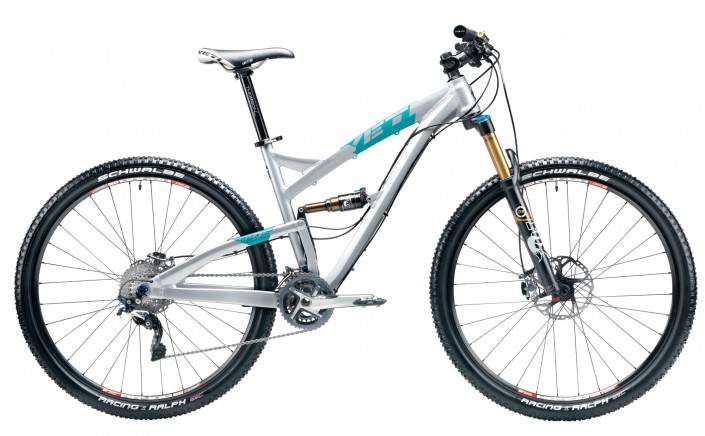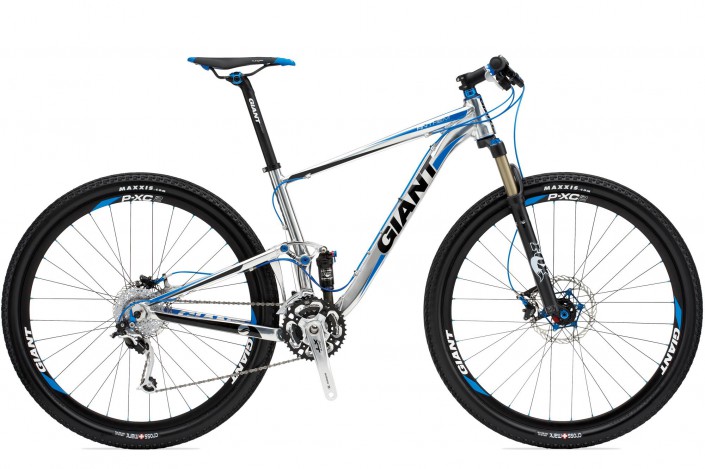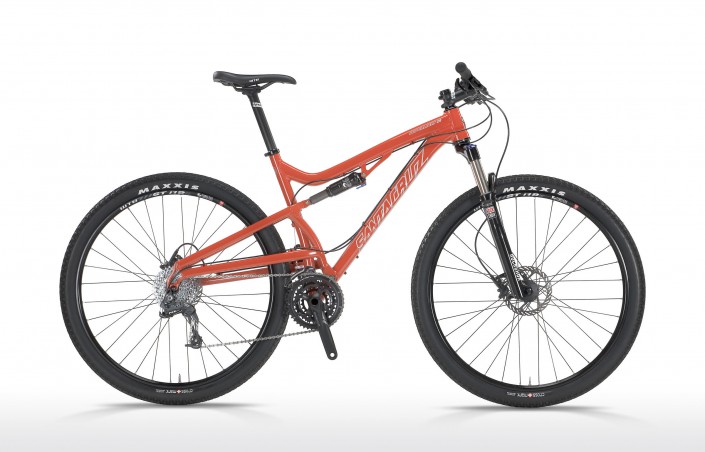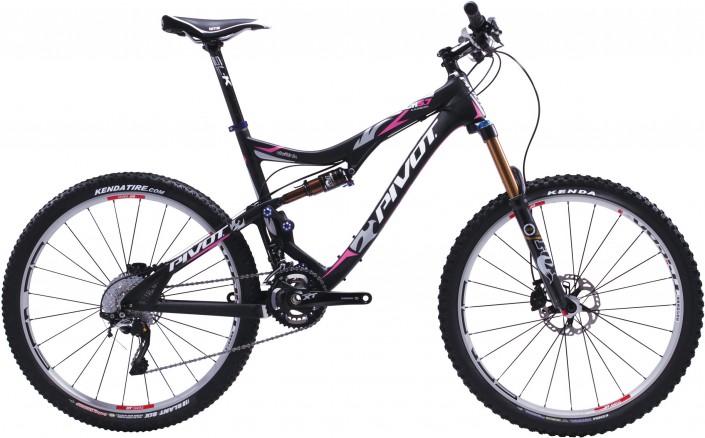What about the wheel sizes?
Mountain bikes have always had one wheel size: 26 inches. But over the past five years, 29-inch wheels have become very popular. Thanks to their larger diameter, they are more stable, have better traction in mud, and are easier to handle rough terrain. They are heavier and don’t turn as sharply, but they are the best choice for most riders. However, as the current year 2013 shows, the truth lies somewhere in the middle – with 27.5-inch wheels.
And how many gears should there be?
It is not so important the number of gears, but their range – the difference between high and low. There are bikes available with a 2×10 and 3×10 drivetrain (meaning two and three chainrings in the front and 10 cogs in the back). The 3×10 transmission has a wider range and slightly more gears in the middle. The 2×10 system appeared in mountain bikes relatively recently, but quickly became dominant due to its light weight, fast shifting, and a range suitable for most cyclists. In 2013, engineering thought…Testing transmissions 1×11.
What about upgrading the old horse?
In the past, there were unified standards – any part could be placed on any frame. Nowadays, integration is increasing, attaching specific components to specific frames. This can make the process of upgrading or repairing more difficult. The advantage of buying a new bike? Progress. Integrated systems are lighter, stronger, and last longer.
Tips for buying
29-inch bikes with 100mm or even 140mm suspension travel and a 2×10 transmission are perfect for 80% of cyclists. Changing the transmission to 3×10 will suit another 10% – those who often ride uphill or simply prefer a lighter gear on the tractor gear. The remaining 10% are racers who ride in downhill and cross-country styles, and they have their own special, expensive needs.
Yeti SB-95

SB stands for superbike, and it’s no joke. On this aluminum 29er with a five-inch rear suspension travel, you won’t notice small bumps, and large ones will be softened without bouncing at high speeds. The relatively short wheelbase allows for quick maneuvering, and the frame geometry positions the rider further back and lower – a forgiving position that helps avoid nasty spills. We tested the bike on winding rocky slopes, and it made us look like more experienced riders than we actually are. Pros:The geometry of the frame allows you to stay in the saddle during long uphill climbs. If this bike doesn’t suit you, then it’s time to look for a sponsor. Cons:It’s a bit heavy (our test one weighed 12.9 kg).
Price: $6,200 (Shimano XTR transmission, Fox 34 Float fork).
9/10
Giant Anthem X 29er 1

Anthem is a proven racing design, but now on 29-inch wheels. The two-position rear shock can be set to a rigid position for smooth trails and to a free position to absorb bumps with its 4-inch travel. However, switching between them requires reaching very far, which is both annoying and dangerous. Nevertheless, once the desired position is set, you will have no doubt that the 12.5-kilogram Anthem is more than worth its price. If you need a workhorse to ride on weekends, then you should start your search right here.Pros:The familiar plus of Giant is the price tag. Excellent maneuverability at high speed.Cons:The suspension mode switch needed to be attached to the handlebar – attempting to ride in the wrong mode will turn a great bike into a terrible one.
Price: $2,950 (SRAM X9/X7 transmission, Fox F29 RL fork).
8/10
Santa Cruz Superlight 29

The single-arm suspension of this bicycle has hardly changed since the debut of the Superlight in 1999 (all the other bikes in the review are equipped with four-arm suspensions, which means they require three extra mechanisms for maintenance). The reason is simple – everything works as it is. And now, combined with 29-inch wheels, the 4-inch suspension will be soft for everyday rides, but still firm enough for racing. The bike doesn’t climb hills very well, but the new Superlight is cheaper than many used models. Pros:The best bicycle for its price. Cons:Not the best components. Heavy weight (13.8 kg). Thin flexible fork – the cause of constant disruptions.
Price: $1,850 (Shimano SLX transmission, RockShox Recon fork).
7/10
Pivot Mach 5.7 Carbon

In the land of 26-inch bikes, life is still bustling, and the Mach 5.7 is fully embracing this life. Thanks to its nearly 6 inches of suspension travel, it performs exceptionally well on descents. The geometry lowers your center of gravity, allowing you to fearlessly tackle obstacles and challenging turns. Durability is more important to Pivot than weight, but even though this 12.1-kilogram bike may not be considered cross-country, it climbs with ease and can compete with specialized models on descents. Pros:Performs excellently on rough terrain. Carbon frame at the price of aluminum. Cons:Weak geometry can lead to loss of control on climbs.
Price: $4,750 (SRAM X9 transmission, Fox 32 Float fork)
8/10
 info@velo.bike
info@velo.bike